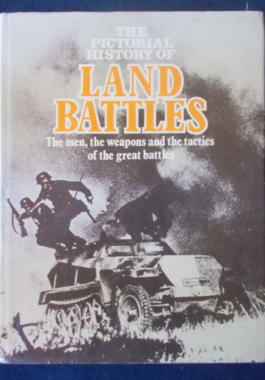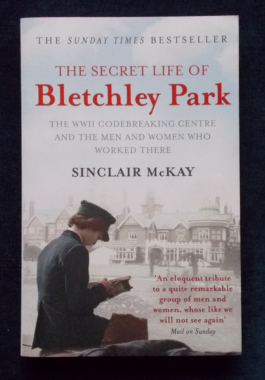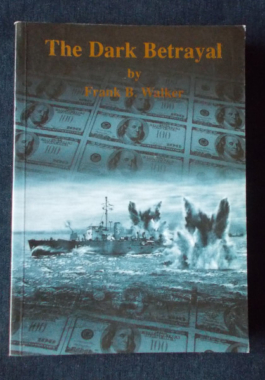- Sorry, this product is unavailable.
-
 A book full of information, pictures and maps of land battles throughout history that proves it was not always about who had the biggest army. In this volume - Metaurus - after the toughest forced march in history, Nero slays Hasdrubal; Agincourt - massed archers and infantry slaughter the French cavalry; Bunker Hill - a thousand farmers ignite the flame of American independence; Austerlitz - Napoleon crushes an army bigger than his own; Balaclava - a battle of idiocy and sheer courage; Second Bull Run - a high spot for the South in the American Civil War; The Somme - slaughter on a scale never seen before or since; Cambrai - tanks explode into action for the first time; Gazala - Rommels' fast moving tactical brilliance; Stalingrad - Hitler's obstinacy leads the Wehrmacht to disaster; Cassino and Anzio - Allied forces combine to force a breakthrough; The Battle Of The Bulge - fast moving Panzers against Eisenhower, Montgomery and Patton; Operation Commando - a true 'United Nations; against the Chinese in Korea. Illustrated with archival photographs, artists' representations and maps.
A book full of information, pictures and maps of land battles throughout history that proves it was not always about who had the biggest army. In this volume - Metaurus - after the toughest forced march in history, Nero slays Hasdrubal; Agincourt - massed archers and infantry slaughter the French cavalry; Bunker Hill - a thousand farmers ignite the flame of American independence; Austerlitz - Napoleon crushes an army bigger than his own; Balaclava - a battle of idiocy and sheer courage; Second Bull Run - a high spot for the South in the American Civil War; The Somme - slaughter on a scale never seen before or since; Cambrai - tanks explode into action for the first time; Gazala - Rommels' fast moving tactical brilliance; Stalingrad - Hitler's obstinacy leads the Wehrmacht to disaster; Cassino and Anzio - Allied forces combine to force a breakthrough; The Battle Of The Bulge - fast moving Panzers against Eisenhower, Montgomery and Patton; Operation Commando - a true 'United Nations; against the Chinese in Korea. Illustrated with archival photographs, artists' representations and maps. -
 A volume of military activity, weaponry and technology from 1987. Arenas of activity covered: The Middle East - Tripoli; Lebanon; the Gulf War; South Yemen and the Arab-Israeli conflict. Europe, North America and the Soviet Union: Terrorism and Power Politics; The Superpower Relationship; NATO and the Warsaw Pact; International Terror; Northern Ireland. Asia - Islam's Guerrillas; The Tamil Tigers; The Philippines; Vietnam and Cambodia' Sikh Separatists. Africa - South Africa; Mozambique; Angola; Chad; The Sudan; Ethiopia; The Boy Soldiers of Uganda. Latin America: Guerrillas and Contras; El Salvador; Nicaragua; Peru; Chile. Military Technology: The War Machine; Aerial Warfare; Space and Missiles; Land Warfare; Naval Warfare. A wealth of information for the war history buff with plenty of colour photographs.
A volume of military activity, weaponry and technology from 1987. Arenas of activity covered: The Middle East - Tripoli; Lebanon; the Gulf War; South Yemen and the Arab-Israeli conflict. Europe, North America and the Soviet Union: Terrorism and Power Politics; The Superpower Relationship; NATO and the Warsaw Pact; International Terror; Northern Ireland. Asia - Islam's Guerrillas; The Tamil Tigers; The Philippines; Vietnam and Cambodia' Sikh Separatists. Africa - South Africa; Mozambique; Angola; Chad; The Sudan; Ethiopia; The Boy Soldiers of Uganda. Latin America: Guerrillas and Contras; El Salvador; Nicaragua; Peru; Chile. Military Technology: The War Machine; Aerial Warfare; Space and Missiles; Land Warfare; Naval Warfare. A wealth of information for the war history buff with plenty of colour photographs. -
 Bletchley Park was where one of Word War II's most famous and crucial achievements was made: the cracking of Germany's Enigma code in which its most important military communications were couched. This country house was home to Britain's most brilliant mathematical brains - including Alan Turing - and the scene of immense advances in technology...indeed, the birth of modern computing. The military codes deciphered there were instrumental in turning both the Battle of the Atlantic and the war in North Africa. Plenty has been written about the scientists and the code-breaking, in both fact and fiction, from Robert Harris and Ian McEwan to Andrew Hodges' biography of Turing. But what of the thousands of men and women who lived and worked there during World War II? This is not only a history of life at Bletchley Park; this is also an amazing compendium of memories from people now in their eighties of skating on the frozen lake in the grounds and the high jinks at nearby accommodation hostels - and of the implacable secrecy that meant girlfriend and boyfriend working in adjacent huts knew nothing about each other's work. Illustrated with black and white photographs.
Bletchley Park was where one of Word War II's most famous and crucial achievements was made: the cracking of Germany's Enigma code in which its most important military communications were couched. This country house was home to Britain's most brilliant mathematical brains - including Alan Turing - and the scene of immense advances in technology...indeed, the birth of modern computing. The military codes deciphered there were instrumental in turning both the Battle of the Atlantic and the war in North Africa. Plenty has been written about the scientists and the code-breaking, in both fact and fiction, from Robert Harris and Ian McEwan to Andrew Hodges' biography of Turing. But what of the thousands of men and women who lived and worked there during World War II? This is not only a history of life at Bletchley Park; this is also an amazing compendium of memories from people now in their eighties of skating on the frozen lake in the grounds and the high jinks at nearby accommodation hostels - and of the implacable secrecy that meant girlfriend and boyfriend working in adjacent huts knew nothing about each other's work. Illustrated with black and white photographs. -

It was at Dunkirk that Toosey's charisma and fortitude were first noted and in 1941 he was given command of an artillery regiment. Sent to fight in the Far East he and his men were embroiled in the battle for Singapore and were taken prisoner after the island's fall in 1942. The Japanese, scornful of the Allied forces for surrendering, determined to make use of the new workforce now at their disposal. Toosey was sent to Thailand to command the 'bridge camp' at Tamarkan where he was ordered to supervise the construction of two railway bridges over the river Khwae Mae Khlong. Starvation rations and harsh working conditions mean that dysentery and cholera were rife and a quarter of the 60,000 prisoners working on the Burma Railway wold perish. Toosey insisted on high standards of hygiene and discipline, giving back the men their self-respect and making himself a buffer for the cruel excesses if the guards. The author is Toosey's grand-daughter. Illustrated with black and white photographs and sketches.
-
 An oral history of D-Day where the stories of that long and violent day on the Calvados Coast of Normandy are told in the words of the men who were Americans, British, Canadians, French and German. Follow these men ashore, up the beach, and into the battle for Normandy. The men who landed on UTAH and OMAHA beach, cracked the Atlantic Wall at Arromanches, parachuted into Carantan or Ste Mere Eglise, or stormed Pegasus Bridge and the Merville battery, tell the reader what it was like to be there, in the midst of the most important single battle of World War II. The view from landing ship, tank turret, parachute harness or infantry fox hole has never been better told than in the pages of this absorbing book. Illustrated with archival photographs.
An oral history of D-Day where the stories of that long and violent day on the Calvados Coast of Normandy are told in the words of the men who were Americans, British, Canadians, French and German. Follow these men ashore, up the beach, and into the battle for Normandy. The men who landed on UTAH and OMAHA beach, cracked the Atlantic Wall at Arromanches, parachuted into Carantan or Ste Mere Eglise, or stormed Pegasus Bridge and the Merville battery, tell the reader what it was like to be there, in the midst of the most important single battle of World War II. The view from landing ship, tank turret, parachute harness or infantry fox hole has never been better told than in the pages of this absorbing book. Illustrated with archival photographs. -
 In many ways, the Digger is a study in contradictions: he doesn't crave war, yet he will fight with unequalled ferocity; he hates spit and polish but will hold his discipline under the most trying conditions; he is tough, yet compassionate; he hates his enemy until he surrenders, then is generous in victory; he despises histrionics but will cry unashamedly at the loss of a mate...The Digger is a key piece of the complex jigsaw puzzler that makes up 'The Australian' - but who is the Digger, exacatly? What elements have gone into forging his spirit?They have won acclaim for their fighting prowess and bravery, while retaining their larrikin spirit, their compassion and their strong sense of mateship. Those who fought in the trenches of Gallipoli, the Somme and Ypres have an immediate kinship with those who followed in NorthAfrica and New Guinea; then later in Korea, Vietnam, East Timor, Iran and Iraq. Australians can be proud of the heritage our Diggers have bequeathed to us. Illustrated with black and white photos.
In many ways, the Digger is a study in contradictions: he doesn't crave war, yet he will fight with unequalled ferocity; he hates spit and polish but will hold his discipline under the most trying conditions; he is tough, yet compassionate; he hates his enemy until he surrenders, then is generous in victory; he despises histrionics but will cry unashamedly at the loss of a mate...The Digger is a key piece of the complex jigsaw puzzler that makes up 'The Australian' - but who is the Digger, exacatly? What elements have gone into forging his spirit?They have won acclaim for their fighting prowess and bravery, while retaining their larrikin spirit, their compassion and their strong sense of mateship. Those who fought in the trenches of Gallipoli, the Somme and Ypres have an immediate kinship with those who followed in NorthAfrica and New Guinea; then later in Korea, Vietnam, East Timor, Iran and Iraq. Australians can be proud of the heritage our Diggers have bequeathed to us. Illustrated with black and white photos. -

The author assesses and explains the role of Goering, dismissing the popular image of the corrupt and indolent buccaneer in order to show the central and serious political role that Goering played in the Third Reich. He shows all facets of Goering's personality, as well as the political context in which he exercised so much power.
-

Ken Bartlett, an Australian sailor in a corvette in the Atlantic, took on a cloak-and-dagger mission into Nazi Germany. It was the start of a long and dangerous trail that led him to suspect that Allied firms traded with Germany and Japan during World War II. After arduous service in corvettes in both the Atlantic and the Pacific, he returned to his job as a journalist and followed the scent of the treason trade. This proved even more hazardous, with the FBI, CIA and thugs hired by the double-dealers out to get him. He achieved a victory - yet it was bitter.
-
 Since the defeat of the Spanish Armada in 1588, the British people have confronted no greater threat to their freedom than in 1940, when Hitler's armies swept through France in a few scant weeks and stood poised twenty-one miles from Dover. Had the Luftwaffe then gained air supremacy over the English Channel, nothing could have prevented the first invasion of Britain in over 900 years. This is the story of how Britain turned the prevailing tide, against all the odds - and won the day. Illustrated with photographs from private collections, drawings, diagrams and charts that clarifies the day by day events on both sides accompanied by text from witnesses and combatants that evoke those few desperate weeks of human endeavour and how the delicate balance was tipped - only just - in Britain's favour.
Since the defeat of the Spanish Armada in 1588, the British people have confronted no greater threat to their freedom than in 1940, when Hitler's armies swept through France in a few scant weeks and stood poised twenty-one miles from Dover. Had the Luftwaffe then gained air supremacy over the English Channel, nothing could have prevented the first invasion of Britain in over 900 years. This is the story of how Britain turned the prevailing tide, against all the odds - and won the day. Illustrated with photographs from private collections, drawings, diagrams and charts that clarifies the day by day events on both sides accompanied by text from witnesses and combatants that evoke those few desperate weeks of human endeavour and how the delicate balance was tipped - only just - in Britain's favour.


